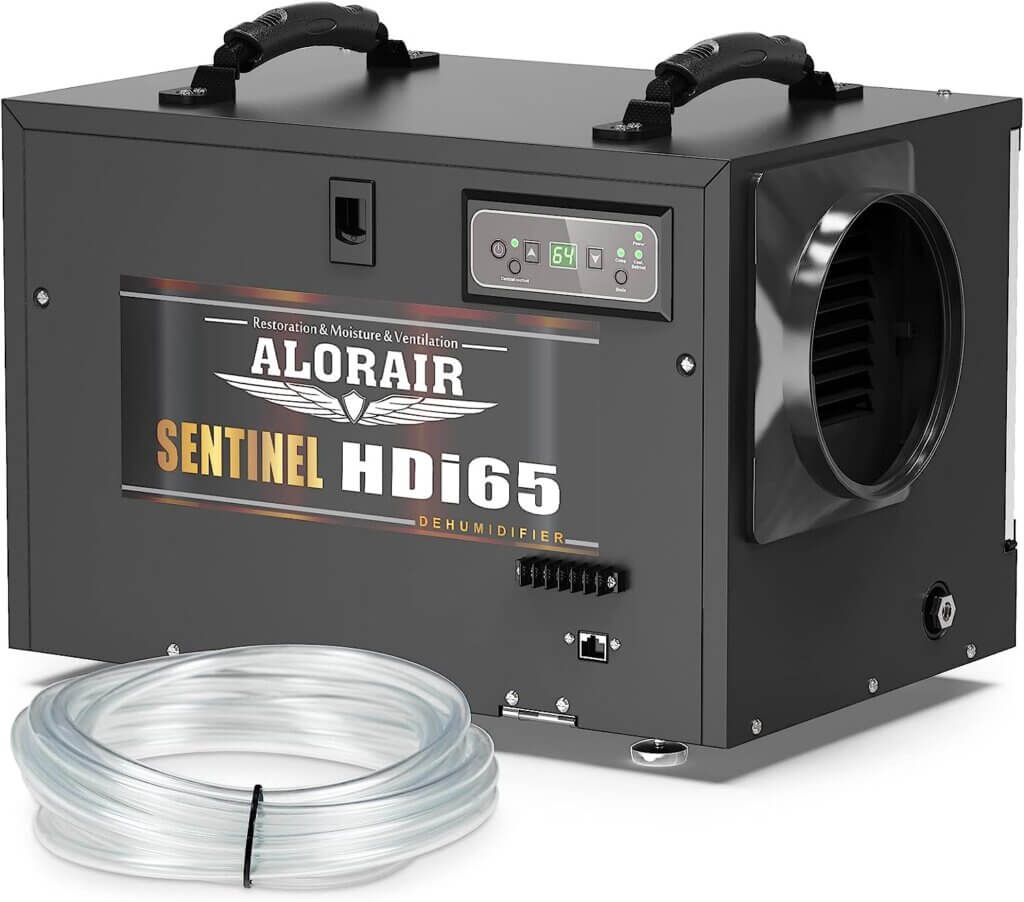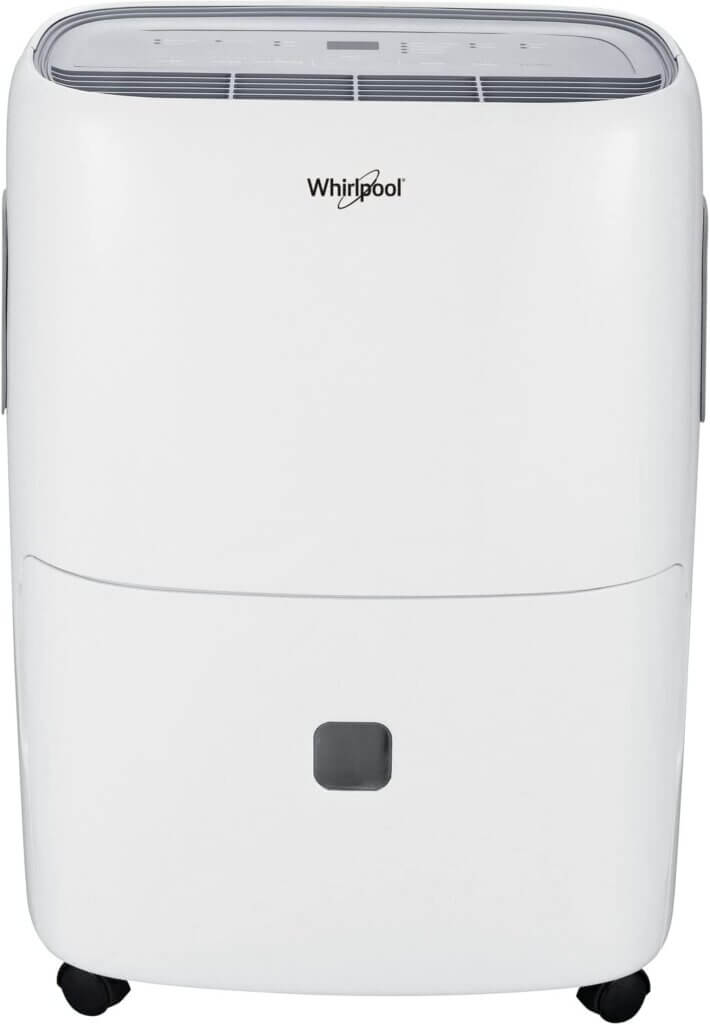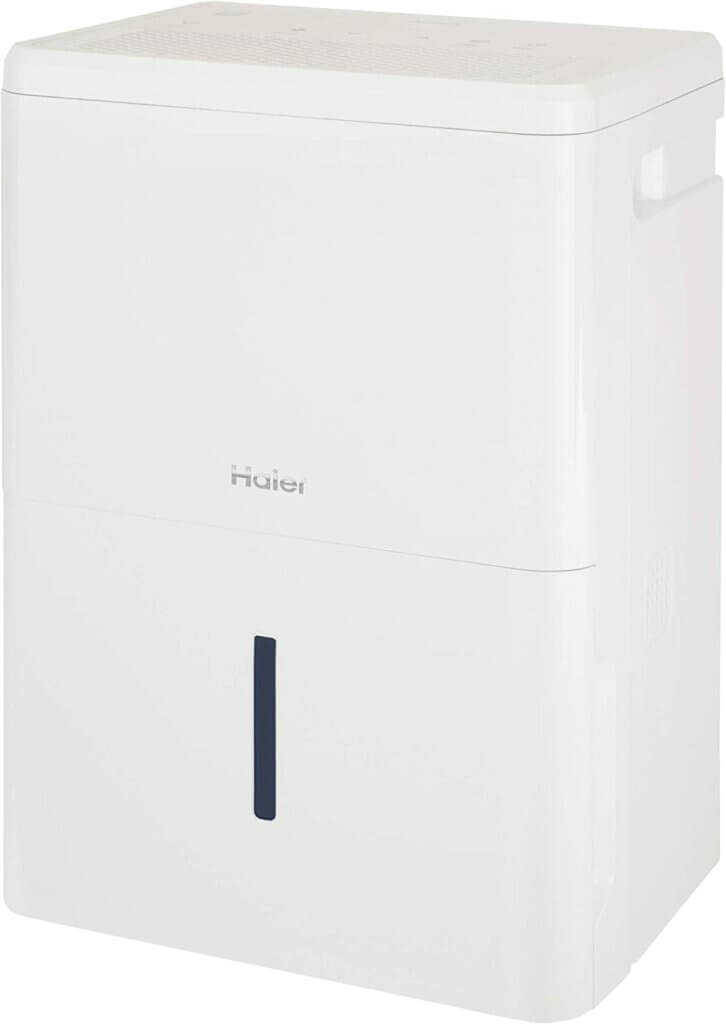A damp and humid basement can be a homeowner’s nightmare, leading to musty odors, mold growth, and potential damage to belongings. To combat these issues effectively, investing in a reliable Dehumidifiers for Basements with Built-in Pump is a smart choice. These advanced devices not only extract excess moisture from the air but also come equipped with a convenient pump to drain the collected water automatically.

In this article, we will introduce you to the top 4 Dehumidifiers for Basements with Built-in Pump, highlighting their features, benefits, and why they are superior to standard dehumidifiers.
Contents
AlorAir 120 PPD Sentinel HDi65 Dehumidifier with Pump:

The AlorAir 120 PPD Sentinel HDi65 is a powerhouse when it comes to basement dehumidification. With its built-in pump, it offers a hassle-free solution to drain the collected water continuously. Its impressive moisture extraction capacity of 120 pints per day ensures quick and efficient moisture control in larger basements. This dehumidifier also features advanced controls, intelligent auto-defrost, and a high-quality compressor, making it a top choice for basement humidity management.
Whirlpool 40 Pint Dehumidifier with Pump:

The Whirlpool 40 Pint Dehumidifier with Pump is a compact yet powerful solution for small to medium-sized basements. Its built-in pump efficiently drains the water, eliminating the need for manual emptying. With its 40-pint moisture removal capacity and Energy Star certification, this dehumidifier ensures both effective dehumidification and energy efficiency. The Whirlpool dehumidifier also offers convenient features like electronic controls, a programmable timer, and a removable, washable filter.
Haier 50 Pint Dehumidifier with Pump:

The Haier 50 Pint Dehumidifier with Pump is designed to tackle moderate to large basement spaces effectively. Its built-in pump ensures continuous drainage, preventing any overflow or water accumulation. With its 50-pint daily moisture removal capacity, this dehumidifier effectively maintains the ideal humidity level in your basement. It features user-friendly electronic controls, a digital humidity display, and a washable filter, making it a reliable and convenient choice.
hOmeLabs 50 Pint Dehumidifier with Pump:

The hOmeLabs 50 Pint Dehumidifier with Pump combines power, efficiency, and convenience in one package. Its built-in pump allows for continuous drainage, sparing you the effort of emptying the water tank frequently. With its 50-pint daily moisture removal capacity, this dehumidifier effectively protects your basement from excessive humidity. It features a user-friendly control panel, adjustable settings, and a reliable auto-shutoff function.
Dehumidifiers for Basements with Built-in Pump Benefits:
- Continuous Drainage: The primary advantage of dehumidifiers with built-in pumps is the ability to achieve continuous drainage. These units pump out the collected water automatically, eliminating the need for manual emptying of the water tank. This feature is especially beneficial for basements where moisture levels can be high, as it ensures uninterrupted operation without the risk of overflow or downtime.
- Convenience: Dehumidifiers with built-in pumps offer unparalleled convenience. Once installed, you can set the desired humidity level and forget about it. The unit will handle the moisture extraction and drainage automatically, saving you time and effort. You won’t have to worry about monitoring the water tank or interrupting your daily routine to empty it.
- Prevents Mold and Mildew Growth: Basements are prone to mold and mildew growth due to their damp environment. Dehumidifiers with built-in pumps effectively control humidity levels, reducing the moisture that supports mold and mildew growth. By keeping the air dry, these units help prevent the development of these harmful substances, protecting your health and the integrity of your basement.
- Protects Belongings: Excessive moisture in basements can cause damage to furniture, electronics, books, and other valuable items. Dehumidifiers with built-in pumps remove excess moisture from the air, creating a drier environment that safeguards your belongings. By maintaining proper humidity levels, these units help prolong the lifespan of your possessions and save you from costly replacements or repairs.
- Improved Air Quality: High humidity levels contribute to poor indoor air quality, leading to discomfort, respiratory issues, and allergies. Dehumidifiers with built-in pumps reduce humidity, which, in turn, helps improve the overall air quality in your basement. By eliminating excess moisture and potential allergens, these units create a healthier living space for you and your family.
Factors to Consider when Installing a Dehumidifier with Built-in Pump:
- Size and Capacity: Determine the appropriate size and capacity of the dehumidifier based on the square footage and moisture levels of your basement. A unit that is too small may struggle to effectively control humidity, while an oversized unit may consume excess energy. Consider the pint-per-day (PPD) moisture removal capacity to ensure it meets your specific needs.
- Pump Drainage System: Evaluate the efficiency and reliability of the built-in pump drainage system. Look for features such as automatic shut-off when the pump reservoir is full, adjustable pump settings, and the ability to handle vertical and horizontal drainage distances. Ensure that the pump has sufficient power to handle the drainage requirements of your basement.
- Noise Levels: Check the noise level ratings of the dehumidifier, especially if you plan to use it in living spaces or areas adjacent to bedrooms. Look for models with quiet operation to ensure minimal disturbance while still enjoying the benefits of a dehumidifier.
- Energy Efficiency: Consider the energy efficiency of the unit by looking for the Energy Star certification. Energy-efficient dehumidifiers help reduce electricity consumption, resulting in cost savings over the long term.
- Maintenance and Filter Replacement: Look for dehumidifiers with easily accessible and washable filters. Regular cleaning or replacement of the filters ensures optimal performance and prolongs the lifespan of the unit. Consider the ease of maintenance and filter replacement when selecting a dehumidifier.
By considering these factors, you can ensure the proper installation and functionality of your dehumidifier with a built-in pump, allowing you to enjoy a dry, comfortable, and healthy basement environment.
Dehumidifiers for Basements with Built-in Pump Conclusion:
Investing in a dehumidifier with a built-in pump for your basement is a game-changer, as it offers numerous benefits over traditional dehumidifiers. The convenience of automatic water drainage ensures you never have to worry about emptying the water tank, even if you’re away for an extended period. The top 4 dehumidifiers mentioned in this article, namely the AlorAir 120 PPD Sentinel HDi65, Whirlpool 40 Pint Dehumidifier, Haier 50 Pint Dehumidifier, and hOmeLabs 50 Pint Dehumidifier, provide exceptional moisture control and come with reliable built-in pumps. With their advanced features and superior performance, these dehumidifiers are excellent choices for any basement, allowing you to bid farewell to moisture-related issues and enjoy a clean, dry, and healthy living space.
Common FAQ
1. What is a dehumidifier with a built-in pump?
A dehumidifier with a built-in pump is a specialized appliance designed to remove excess moisture from the air in your basement while simultaneously pumping out the collected water to a drain or another location. It offers a convenient solution for basements prone to high humidity levels, as it eliminates the need for manually emptying the water tank.
Important information:
- A dehumidifier with a built-in pump automatically removes moisture from the air and pumps out the collected water.
- It provides a convenient solution for basements with high humidity levels.
- Manual emptying of the water tank is not required.
2. How does a dehumidifier with a built-in pump work?
A dehumidifier with a built-in pump works by drawing in the humid air from your basement. The air passes through a cooling coil, where moisture condenses into water droplets. The water is then collected in a reservoir or directly pumped out through a hose connected to a drain or another location. The dehumidifier continues this process until it reaches the desired humidity level in the basement.
Important information:
- The dehumidifier draws in humid air and condenses moisture into water droplets.
- The collected water is either stored in a reservoir or pumped out through a hose.
- The dehumidifier operates until the desired humidity level is achieved.
3. What are the benefits of using a dehumidifier with a built-in pump in a basement?
A Using a dehumidifier with a built-in pump in your basement offers several benefits:
- Prevents mold and mildew growth: Excessive moisture in basements can create an ideal environment for mold and mildew growth. A dehumidifier removes the excess moisture, effectively reducing the risk of mold and mildew formation.
- Improves air quality: High humidity levels in basements can contribute to musty odors and airborne allergens. By reducing the moisture content in the air, a dehumidifier helps improve the overall air quality, making it healthier and more comfortable.
- Protects belongings: Basements often serve as storage areas for valuable items. Excess humidity can damage these items by promoting rust, mold, and mildew growth. A dehumidifier helps safeguard your belongings by maintaining optimal humidity levels.
Important information:
- A dehumidifier with a built-in pump prevents mold and mildew growth.
- It improves air quality by reducing musty odors and allergens.
- The appliance protects belongings stored in the basement from damage caused by excess humidity.
4. Can a dehumidifier with a built-in pump be used in other areas besides basements?
A Yes, a dehumidifier with a built-in pump can be used in various areas beyond basements. While it is particularly beneficial for basements due to their typically high humidity levels, this type of dehumidifier can also be utilized in crawl spaces, garages, laundry rooms, and other areas with excess moisture concerns.
Important information:
- Dehumidifiers with built-in pumps can be used in crawl spaces, garages, and laundry rooms, among other areas.
- They are not limited to basement use only.
- Any space with high humidity or moisture issues can benefit from this type of dehumidifier.
5. What factors should I consider when choosing a dehumidifier with a built-in pump?
A When selecting a dehumidifier with a built-in pump for your basement, consider the following factors:
- Capacity: Determine the size of the area you need to dehumidify. Choose a dehumidifier with a capacity suitable for your basement’s square footage and humidity levels.
- Pumping distance: Consider the distance between the dehumidifier and the desired location for pumping out the water. Ensure that the pump has sufficient power and a long enough hose to reach the drain or desired outlet.
- Additional features: Look for features such as adjustable humidity settings, automatic shut-off when the desired humidity level is reached, and a programmable timer. These features can enhance convenience and energy efficiency.
Important information:
- Consider the dehumidifier’s capacity in relation to your basement’s size and humidity levels.
- Ensure the pump has enough power and a hose length suitable for the pumping distance.
- Additional features like adjustable humidity settings and automatic shut-off can improve convenience and energy efficiency.
Also Check out Low Temperature Dehumidifier for your Basement
